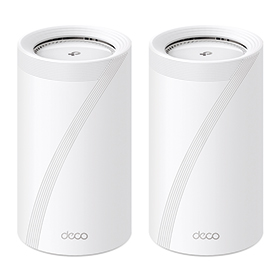
The next amendment to the IEEE 802.11 Wi-Fi standard is known as IEEE 802.11be EHT (Extremely High Throughput), building onto the previous generation 802.11ax. Included are functions like orthogonal frequency-division multiplexing (OFDM) where a single stream of information is split across several closely spaced subchannel frequencies, and the inclusion of the 6 GHz transmission frequency from Wi-Fi 6E, ensure blisteringly fast data throughput with little delay.
Wi-Fi 7 was first approved in March 2019, with the initial specifications being a protocol using three frequencies and communicating at up to 46120 Mb/s. Although not yet ratified – this is expected to be completed only in May 2024 – many manufacturers are releasing products based on the new standard, and some are bypassing the Wi-Fi 6E standard altogether to jump directly to Wi-Fi 7 (which promises everything Wi-Fi 6E has and more). Although these devices are based on a preliminary version, manufacturers will effect any changes later on via a firmware update.
The standard is backwards compatible with current Wi-Fi 5 and Wi-Fi 6 standards, so all existing devices currently deployed on a wireless network will continue to function. However, with more powerful hardware and better antenna arrangements, it will provide faster speeds and a better quality connection, with lower latency. Stability is reported to also have been improved over the predecessors.
And these improvements are vital for the modern data-hungry applications that users are expecting in the future. Examples include simultaneously streaming from multiple sources in high definition, applications using augmented and virtual reality (AR and VR), networks that are sure to be connected to hundreds of IoT devices all collecting and transmitting data, and of course, high-speed low-latency cloud gaming.
To achieve this, Wi-Fi 7 offers various features like faster and a larger number of MIMO streams, wider radio channels, and other features to prevent channels from causing interference during these multiple streams.

As shown in figure 1, Wi-Fi 7 doubles the available bandwidth, compared to Wi-Fi 6E. This is accomplished with three super-wide 320 MHz channels (compared to Wi-Fi 6’s 160 MHz channels) on the dedicated 6 GHz band while still using the existing channels on the legacy 5 and 2,4 GHz bands.
Quadrature Amplitude Modulation (QAM) is the scheme used to translate digital packets into an analogue signal that can wirelessly transfer the data. By varying the phase and amplitude of radio waves, spectral efficiency is improved by incorporating more data into each transmission.
When it comes to arranging the data into packets, Wi-Fi 7 has certainly surged ahead. Whereas Wi-Fi 5 and Wi-Fi 6 used 256-QAM and 1K-QAM respectively, Wi-Fi 7 makes the jump to a 4K-QAM (1024-QAM) scheme, an increase to the physical layer data rate of 20% over Wi-Fi 6.

With Wi-Fi 5 and Wi-Fi 6 there are a maximum of eight MIMO data streams per frequency. Wi-Fi 7 doubles this to 16 MIMO streams resulting in a theoretical transmission rate of 46 Gb/s (if all 16 streams are used over a 320 MHz channel). Therefore, combined with 320 MHz ultra-wide bandwidth, multi-link operation and 4K-QAM, Wi-Fi 7 provides speeds up to 4,8 times faster than Wi-Fi 6 and 13 times faster than Wi-Fi 5.

So far, however, the top routers available that support this new standard only support a maximum of four MIMO streams. Secondly, a connected device can only transmit over one frequency at a time, so the real-world transmission throughput will be around twice as fast as Wi-Fi 6. This is still a major boost, as combined with the increase in throughput, there will be less congestion, resulting in a more consistent link.
One manufacturer that has already announced products using this new Wi-Fi standard is TP-Link with its Deco BExx range of mesh routers. The Deco BE95 is a quad-band whole home mesh Wi-Fi 7 system that can handle 16 streams for a total throughput of up to 33 Gb/s (each of the two 6 GHz links can accommodate 11 520 Mb/s and this is combined with the 5 GHz (8640 Mb/s) and 2,4 GHz links. This multi-link operation, together with the 320 MHz-wide channels, not only increases throughput but also reduces latency and improves reliability of the communication link.
| Tel: | +27 11 791 1033 |
| Email: | [email protected] |
| www: | www.otto.co.za |
| Articles: | More information and articles about Otto Wireless Solutions |

© Technews Publishing (Pty) Ltd | All Rights Reserved